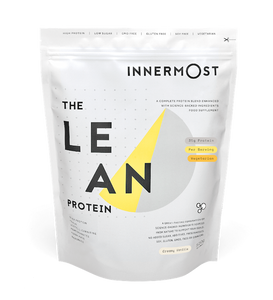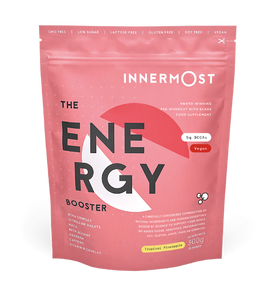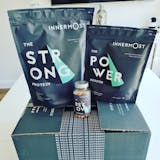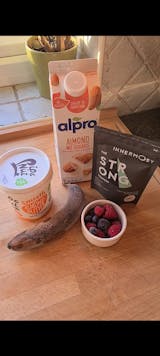Nature’s best-known sweetener: sugar. Sugar is in pretty much all the foods we eat in some shape or form, so being aware of its presence, its side effects and its recommended intake is a pretty important step in maintaining a healthy, balanced diet. But what really is it, and where does it come from? We’ve got the lowdown and everything you need to know about sugar.
What is sugar?
Simply, sugar is a carbohydrate. It’s that really sweet stuff that sweetens so many of our foods. Unfortunately, sugar also makes it incredibly hard to give up unhealthy foods, as research has stated the substance actually has addictive effects.
Scientifically, sugar is a natural ingredient found in the sugar cane plant. Used first nearly 5000 years ago, people have been harvesting this plant for centuries and is definitely a huge guilty pleasure for many. Glucose is one type of sugar, and is the main sugar that comes from our food sources. It’s also pretty important, as it’s the main source of energy for our body.
Why do people consume sugar?
It’s an unfortunate fact that generally, most adults and children consume too much sugar. This isn’t always a conscious choice, as so many of our everyday products have sugar in, and more sugar than you initially may think. Aside from the obvious delicious taste that sugar brings to so many of our daily food favourites, many people enjoy sugar to sweeten drinks, increase their dopamine levels and reap the benefits of glucose, as this is the main source of fuel for the brain and a fantastic energy source. But, where do we get it from?
Sugar sources
There are two kinds of sugar sources: those being naturally occurring, and artificially (added) sugar. Naturally occurring sugar sources include food items like fruit, milk and vegetables, with some particularly sugary examples including:
- Grapes
- Sweet Potatoes
- Cherries
- Beetroot
- Bananas
- Figs
- Sweetcorn
On the other hand, added sugars are those that are added during food processing. Some of the most common foods and drinks that include added sugars are energy drinks, ready meals and desserts - so it's important to be mindful of our intake of these items.
Why do we need to control our sugar intake?
Everything has its place in moderation – and this is particularly true for those that suffer from high blood pressure, so try to avoid overconsumption. Added sugars have been noted to contribute to a higher risk of obesity, diabetes and heart disease, with many researchers voicing concern over the quantities that so many of us consume as a result of these correlations.
How Much Sugar Per Day?
On average, an adult should be consuming around 130g of glucose per day. This is the recommended amount to sustain daily physical exercise levels – so any less than this, and you’re likely to be feeling pretty sluggish and tired. Any more, though, and you’ll probably experience some jitters, whilst simultaneously putting yourself at risk for some unhealthy effects if it’s overconsumed regularly.
Due to this recommended intake, many are switching to alternatives in a bid to experience the delights of sugar without experiencing any bad or unhealthy side effects as a result. This is particularly common in avid coffee and tea drinkers, who don’t want to spoon too much sugar into each drink throughout the day. But how do we know how much sugar is too much sugar? It’s not as if we can measure every single thing we eat… is it?
Glycaemic Index
Wrong. The Glycaemic Index (GI) is a rating system that is used to measure foods that contain carbohydrates, to assess the speed at which the sugars involved in these foods would affect your blood sugar levels upon consumption.
This index is highly important to determine what foods are safe for those that suffer from diabetes or who want to monitor their blood pressure levels to avoid.
Foods with a high Glycaemic Index include:
- White Bread
- Soft Drinks
- White Rice
- Potatoes
- Chips
Why is sugar bad for you?
Sugar is bad for you due to the effect the substance has on the blood. High-sugar diets can really take its toll on the body, including your teeth. A high-sugar intake has actually been linked to many unhealthy side effects, such as:
- Increased Acne
- Greater Risk of Cancer
- Speeds Up The Aging Process
- Increases The Risk of Diabetes
Sugar vs Sweeteners
As a result of the effect of sugar and glucose on our blood pressure levels, many people switch to artificial sweeteners as an alternative. This is because these provide the same, sweet taste that people love, without increasing our blood sugar levels. Pretty neat, right? Artificial sweeteners are actually much sweeter than naturally occurring sugar, but are generally low or no calorie. These are found in tons of our everyday products such as:
- Desserts
- Drinks
- Ready Meals
- Cereal Bars
- Cereals
- Condiments
Natural Sweeteners
If you’re looking to sweeten your breakfast or tea, honey is also a great way to do this, and an alternative to a sprinkle of sugar. You can also use honey as a substitute in some baking – by substituting equal amounts honey to equal amounts sugar. Who knew?
Innermost Products
Due to the effects to your health that come from an oversaturation of sugar in your diet, here at Innermost, we wanted to make sure we weren’t contributing to your limited daily sugar intake. Our protein blends and The Energy Booster both contain sweeteners to improve the flavours, without increasing your blood pressure. Fantastic.
Summary
As with all things nutrition based, everything can be enjoyed in moderation. It’s important to ensure you are consuming certain food groups (sugar and glucose included) as part of a healthy, balanced diet – but ensure that is what you are doing! Keep an eye on your intake, as unfortunately, sometimes even snacks that are marketed as a healthy alternative can have a pretty hefty sugar content level. So watch out!
























